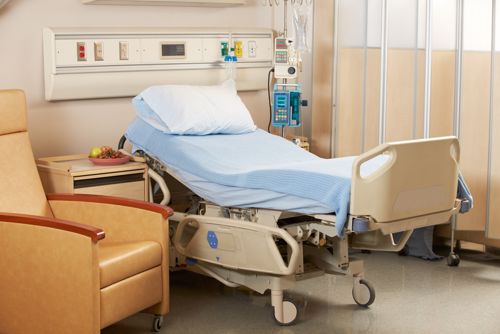
IoT and the future of remote health care
By Max BurkhalterFebruary 15, 2021
Traditionally, doctors interacted with patients in-person to make diagnoses, arrange treatment and provide procedures in conjunction with medical staff and the patient in a home, clinic or health care facility setting.
Even before the advent of the COVID-19 pandemic, telehealth was experiencing enormous growth, particularly in rural regions where patients were far from the help of a doctor or clinic. Even then, most care was restricted to remote consultations dependent on audio and visual aids. However, being able to monitor patients on an ongoing basis requires more attention than a simple phone call can provide. Patients with chronic conditions need additional attention and monitoring. Hospital and clinic overcrowding make it difficult to keep patients on-site, and for patients in rural areas, repeated visits to a city center may not be feasible.
The internet of things and telehealth
IoT-enabled devices have transformed remote monitoring in the health care sector, empowering doctors to keep patients safe and enabling health care professionals to deliver long-term care to those with chronic conditions. Individuals are not only more engaged with their own care, but are increasingly satisfied with the outcome as their interactions with their health care providers have become easier and more efficient. According to a research report published in PMC, the medical Internet of Things (mIoT) is key to the future of "precision medicine."
Tracking patient health remotely achieves many goals including streamlined care, reduced hospital stays and fewer re-admissions. For patients with high blood pressure, diabetes, cardiovascular conditions and other chronic health conditions, long-term monitoring can even increase their overall lifespan.
IoT can also have a significant impact when it comes to reducing costs. The pandemic forced many care providers to find ways to meet with, diagnose and treat patients remotely. New technologies make it possible to provide long-term care for patients in remote areas or those who cannot leave their homes to visit a clinic. This helps to reduce the costs of assistance typically associated with a regular facility setting, creating positive outcomes for both patients and their care providers.
The internet of things is leading the charge in the transformation of the health care industry. It is redefining how devices and people interact, making it easier to deliver health care solutions with applications that benefit all involved parties, including patients and their families, doctors, care providers and insurance companies.
Patient-first technology
Devices commonly used for patient care help to monitor and track variations in blood pressure, blood sugar, heart rate and more. This wearable tech allows doctors to remotely track patient health and identify new symptoms before they are able to advance to more serious emergencies. These devices can also be programmed to help track calorie counts and check on exercise and fitness levels.

This ability to track patient health is constantly changing the lives of patients who are older, as well as those who live alone with a health condition. The ability to track activity and enable alert mechanisms to send signals to family members or health care providers if routines change can save lives.
Devices for providers and care facilities
Physicians also benefit from these connected devices. Wearables and home monitoring equipment that connect to the internet of things are able to continually transmit important data, including whether patients are adhering to their treatment plans, or if they are experiencing a medical emergency and are in need of attention. The data collected from each device enables health care professionals to stay on top of their patients' care and proactively make treatment decisions for best outcomes.
In hospitals and other health care facilities, overcrowding and understaffing can reduce the level of quality patient care provided. HealthTechZone notes that IoT devices can be extremely useful in these settings as sensors can be used to track the real-time location of tagged medical equipment including oxygen pumps, defibrillators, wheelchairs, nebulizers and other important and commonly used items. This technology also means that staff deployment can also be tracked across a facility.
IoT for insurance
In the health insurance sector, connected intelligent devices can transmit data that companies can leverage for underwriting in claims. There are numerous opportunities for insurers and customers, as IoT can be invaluable for helping keep health care costs low. Risk assessment processes become simpler, pricing becomes more transparent and claims handling becomes more intuitive.
In the future, we can expect to see insurance organizations offering incentives to both individuals and hospitals for using and sharing health data that is generated by connected devices. Using this technology to track routine activities, adherence to treatment plans and precautionary health measures can help reduce claims and allow for more precision in the underwriting processes. Data from these devices can also provide faster and more accurate claim validation.
Contact Perle today to learn how medical IoT and appropriate data center management can help you provide better patient outcomes.



